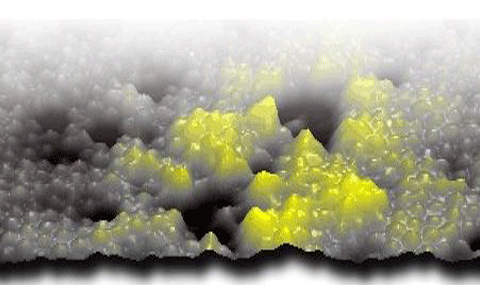One of the hallmarks of Weyl semi-metals is the existence of unusual topological surface states known as "Fermi arcs". The formation of these states is guaranteed by the existence of bulk Weyl points with opposite chirality. Tantalum Arsenide (TaAs), a member of the newly discovered family of Weyl semi-metals, harbors a host of nontopological (“trivial”) surface states overlapping in energy with the predicted 12 "Fermi arcs". This overlap poses a major challenge in identifying the signatures of the arcs. Here we harness the inherently distinct spatial structure of trivial and Fermi arc states to visualize the Fermi arcs for the first time using scanning tunneling microscopy. We do so in four distinct ways, each of which highlights a different aspect of their unusual nature. We reveal their relatively isotropic scattering signature, their energy dispersion and its relation to the bulk Weyl points, their deep bulk penetration relative to that of non-topological surface states and their weak coupling to the atomic structure. The latter is obtained by accounting for the spatial structure of the Bloch wavefunction and its effect on the scattering properties of the electrons off lattice defects in general. It thus provides a novel analysis tool for the spectroscopic characterization of electronic wavefunctions using scanning tunneling microscopy.
Available on Science Advances (link)

Quasi-particle interference of trivial bands and Fermi arcs in TaAs.


